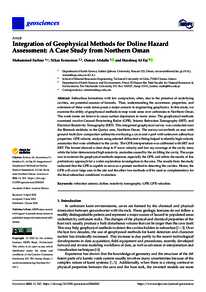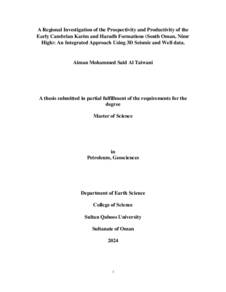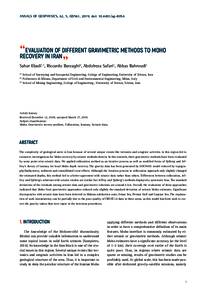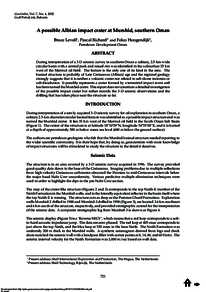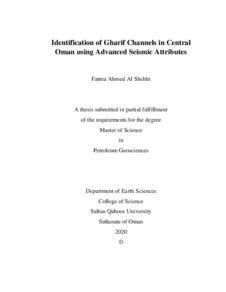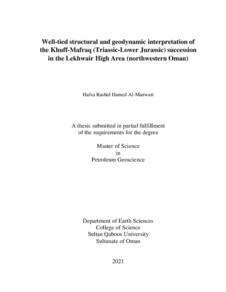Document
Integration of geophysical methods for doline hazard asessment : a case Study from northern Oman.
Identifier
DOI: 10.3390/geosciences12060243
Source
Geosciences (Switzerland). v. 12, 6, 243
Contributors
Country
Switzerland
Publisher
MDPI.
Gregorian
2022-06-01
Language
English
Subject
English abstract
Subsurface formations with low compaction, often, due to the presence of underlying cavities, are potential sources of hazards. Thus, understanding the occurrence, properties, and extension of these weak zones poses a major concern in engineering geophysics. In this study, we examine the ability of geophysical methods to map weak areas over carbonates in Northern Oman. The weak zones are known to cause surface depression in many areas. The geophysical methods examined involve Ground-Penetrating Radar (GPR), Seismic Refraction Tomography (SRT), and Electrical Resistivity Tomography (ERT). This integrated geophysical survey was conducted near the Bimmah sinkhole, in the Quriya area, Northern Oman. The survey covers both an area with ground truth (low compaction sediments overlaying a cave) and a part with unknown subsurface properties. GPR velocity analysis using selected diffraction’s fitting helped to identify high-velocity anomalies that were attributed to the cavity. The GPR interpretation was calibrated with SRT and ERT. The former showed a clear drop in P-wave velocity and low ray coverage at the cavity zone, while the latter demonstrated high resistivity anomalies caused by the air filling the cavity. The scope was to examine the geophysical methods response, especially the GPR, and utilize the results of this preliminary approach for a wider exploration investigation in the area. The results from the study indicated that the GPR is capable to serve as a pioneer method in detecting the cavities. Hence, the GPR will cover large area in the site and the other two methods will be used as complementary for the final subsurface conditions’ evaluation.
ISSN
2076-3263
Resource URL
Category
Journal articles

